Материнская Плата
В мире, где магия принимает форму технологий, оставленных давно исчезнувшей цивилизацией, возникает новая угроза в виде вредоносного вируса, распространяющегося через машины, бродящие по Пустошам.
Разработано Meguey Baker, Rowan Hall, & Spenser Starke
Уровень сложности: •••
Краткое описание
Прочитайте этот раздел игрокам, чтобы познакомить их с кампанией.
Среди древних руин падшего мира великие города-крепости Долины Эха являются оплотом надежды в этой враждебной местности. Используя технологию, основанную на таинственном языке, который проходит через металлические нити, привязанные высоко над долиной, эти цитадели изолируют своих граждан от Пустошей, где бродят автономные машины, а огромные блуждающие города рыщут по земле в поисках металлолома. Но когда злобный вирус заражает механических зверей, работающих бок о бок с жителями долины, некогда послушные создания становятся жестокими. В кампании «Материнская плата» вы будете использовать технологию вместо магии, играя за необычных героев, покидающих безопасность городов-крепостей, чтобы путешествовать по Пустошам и вернуть мир в Долину.
Тон и атмосфера
Приключенческий, эпический, инновационный, загадочный, постапокалиптический, технологичный
Темы
Искусственный интеллект, идентичность и личность, инновации, технология против человечества
Ориентиры
Horizon Zero Dawn, Mortal Engines, Mad Max: Fury Road, The Final Fantasy Series, Fullmetal Alchemist, Slugblaster

Обзор
Если ваша группа решит сыграть в эту кампанию, перед созданием персонажей предоставьте игрокам следующую информацию.
Долина Эха получила свое название потому, что ее жители обитают среди руин — «эха» — падшей цивилизации и пытаются использовать древние технологии в новых целях. За сотни лет, прошедших после таинственного исчезновения прежнего мира, сталь и бетон старого мира уступили место растениям и животным долины. Трава проросла в трещинах древних дорог, деревья обитают в заброшенных небоскребах, а история забыла имена персонажей, изображенных на разрушающихся статуях, оставив тех, кто построил дома в руинах этих некогда величественных городов, блуждать среди сложных программ и машин, оставленных в наследство.
Теперь такие грозные поселения, как Аргент, обитают среди разваливающихся руин, возводя стены, чтобы не впустить насилие и сохранить рабочих. Между тем, Скиталец Каркрофт и другие блуждающие города перемещаются по долине на всевозможных транспортных средствах, города на вершине громоздких машин, как путешественники, тащащие свои рюкзаки.
Над долиной расположена Сеть, плотная паутина из мерцающей металлической нити, которая передает информацию и обеспечивает связь между различными городами Долины Эха. Хотя жители долины давно используют эту древнюю технологию, сложный язык, использовавшийся для создания и модификации сети, был утрачен, когда пала прежняя цивилизация.
По всей Долине Эха бродят автономные машины падшего мира, называемые остатками. Эти автоматоны бывают двух основных типов. Одни напоминают животных и имеют черты, характерные для их живых собратьев. Другие были созданы с определенной функцией, например, защитники, строители, наблюдатели или домашние работники, которые выполняли задачи вместе со своими давно умершими создателями. Некоторые остатки живут в городах и считаются «ручными», в то время как другие бродят «дикими» по Пустошам, часто защищая свою территорию и охотясь за источниками энергии. Некоторые из них достаточно велики, чтобы нести на своих спинах целые блуждающие города, в то время как другие представляют собой маленьких существ, которые не выполняют никакой очевидной функции, кроме как поставлять запчасти для работающих машин, которые люди используют каждый день.
Эти машины получают энергию из различных источников. Остатки притягиваются к энергии и информации, как органические животные к пище; в то время как ручные остатки могут получать свою энергию из подключения к Сетям в городах, их дикие собратья вынуждены прибегать к другим средствам. Остатки могут производить энергию посредством фотосинтеза, убивать другие остатки для получения их запасов энергии или охотиться на людей, чтобы выкачать их энергию. Они ведут себя как другие дикие животные — всегда сосредоточены на следующем приеме пищи, чего бы им ни стоило это. Ходят слухи, что некоторые дикие остатки способны извлекать информацию из мозгов убитых ими существ.
Пустоши — это заросшие, враждебные земли между городами, заполненные дикими остатками и древними руинами. Средний гражданин проводит большую часть своей жизни в окруженном стеной или блуждающем городе, но иногда возникает необходимость выезжать в Пустоши. Защитники города должны останавливать атаки диких остатков, гонцы бегают между городами, когда части Сети нуждаются в ремонте, а некоторые города полагаются на охотничьи группы для получения пищи. В Пустошах путешественники и остатки могут по-прежнему получать доступ к Сети через свободные колодцы данных.
Чтобы получить доступ к огромному количеству информации, оставленной древним миром, жители, как смертные, так и машины, используют порты у основания колодцев данных, стройных башен, которые достигают линий Сети. Колодцы данных можно найти по всей долине, но многие из них находятся в обнесенных стенами городах, что делает их недоступными для остальной части региона. Колодцы в Пустошах, которые остаются свободно доступными, становятся очагами насилия, поскольку дикие остатки используют их как водопой для получения энергии и информации. В то же время, Паломники Шпиля — это группа, которая высоко ценит и защищает свободные колодцы данных, поскольку они считаются священными местами, связанными с Материнской платой.
Самая высокая башня в центре Долины Эха — это Материнская плата, откуда берут начало все нити Сети. Хотя никто никогда не смог войти в эту устрашающую башню, в каждом городе есть свои представления о ее древней силе. Большинство граждан почитают огромное присутствие внутри как бога, веря, что оно почиталось падшей цивилизацией и несет их мудрость вперед, чтобы благословить сегодняшний мир, испытывающий нехватку информации. Другие считают, что это «главная программа», оставленная техномантами падшего мира, и поэтому она так же несовершенна, как и любой другой остаток. Хотя Материнская плата сама по себе не общается с людьми напрямую, она управляет всеми данными и энергией через Сеть. Без ее операционной системы технологии долины в конечном итоге перестали бы работать. Вопреки распространенному мнению, некоторые техноманты и паломники утверждают, что разговаривают с Материнской платой на языке машин, известном как «кход».
Техноманты — это мастера данных, которые используют древние машины для новых целей. Историки занимаются расшифровкой кхода, а практикующие работают непосредственно с остатками и другими технологиями, чтобы глубже понять этот таинственный язык. Некоторые полностью отказываются от изучения кхода, предпочитая просто использовать машины для получения энергии. Большинство из них имеют общее представление о том, как использовать технологии падшего мира, что позволяет им управлять его мощными программами, даже не понимая их внутреннего устройства. Поскольку современные люди не до конца понимают эту технологию, техноманты могут только временно ремонтировать остатки.
Механики больше сосредоточены на физических аспектах остатков. Многие из них работают на заводах или на свалках, ремонтируя шестерни, провода и процессоры для различных машин, включая остатки и механизмы (машины, управляемые оператором). Некоторые механики могут соорудить новые остатки из запасных частей, но они должны использовать старые ядра остатков из падшего мира, чтобы дать им жизнь. Существуют легенды о диких остатках, создающих себе подобных, но большинство считает их мифами, рассказываемыми путешественниками.
Недавно произошла катастрофа, известная как Ярость Остатков — вирус распространился по Сети и заставил остатки атаковать в темноте ночи. Эти машины, которые когда-то мирно работали в домах и на предприятиях, напали на сотни ничего не подозревающих людей как в огороженных стенами городах, так и в кочевых поселениях. В Пустошах путешественники внезапно столкнулись с особенно жестокими стаями диких остатков. Автономные машины всегда представляли собой уникальную опасность — работающие остатки выходят из строя, дикие остатки убивают для получения энергии — но это было другое. Это была резня.
Все больше и больше остатков становятся жестокими, и те, кто живет при Сети, должны решить, что делать, прежде чем Долина Эха встретит судьбу, подобную судьбе падшего мира. Никто не знает, кто или что вызвало злобный вирус, захвативший остатки, но растет уверенность, что это каким-то образом связано с Материнской платой, так как вирус широко распространен.

Сообщества
Все сообщества доступны, но некоторые из них имеют уникальные особенности в кампании Материнская плата. При необходимости предоставьте игрокам следующую информацию и выберите один или несколько вопросов, которые вы зададите им во время нулевой сессии.
Научные
Многие научные сообщества посвящают себя изучению истории падшего мира и технологий, которые он оставил после себя, как в духовном, так и в практическом плане. Персонажи из этого сообщества могут быть экспертами в области работы механизмов или остатков, техномантами, пытающимися использовать кход, или учеными, изучающими историю падшей цивилизации. Если они имеют карьеру в любой из этих областей, они будут очень востребованы, где бы они ни оказались.
- Вы обнаружили что-то о падших, чем никогда ни с кем не делились. Какой секрет вы храните?
- Вы много лет тренировались как техномант, но одна вещь об остатках вас озадачивает. Что это?
- У вас есть трюк, чтобы запустить любую машину. Что вы делаете и кто вас этому научил?
Догматичные
В Долине Эха большинство персонажей, принадлежащих к Догматичным, входят в группу, занимающуюся защитой большого сообщества. Они могут защищать город, окруженный стеной, или блуждающий город, либо работать наемниками, охотящимися за остатками в Пустошах и собирающими их на металлолом. Эти персонажи используют свои навыки за определенную плату — иногда в виде жилья, иногда в виде металлолома, а иногда просто в виде прибыли. Группы, связанные с городом, часто имеют строго регламентированные операции, в то время как наемники, путешествующие по долине, чаще всего обладают уникальными системами и навыками.
- Когда-то вы были членом небольшой группы подрядчиков, но теперь вы служите в гвардии Аргента. Что заставило вас остаться за стенами?
- У вас есть хитрость, позволяющая ловить и перерабатывать диких остатков, за что городские власти платят вам щедрые гонорары. В чем она заключается и кто вас этому научил?
- Ваш близкий человек был тяжело ранен в результате несчастного случая во время сбора обломков. Что произошло и почему вы считаете, что это ваша вина?
Горные
Горы, окружающие долину, поддерживают паутину Сети, делая свои вершины нейтральной территорией. Все города должны предоставлять граждан для Стражей Башни, независимой группы, которая ухаживает за башнями и проводами, и защищает Сеть от воздействия дикой природы и погодных условий. Игроки могут выбрать сообщество горных жителей, если хотят создать персонажа, принадлежащего к Стражам Башни, или один из небольших блуждающих или укрепленных городов, которые для безопасности обосновались на скалах.
- Считаете ли вы себя дома в нижней части долины? Почему да или почему нет?
- Есть секрет, который знает только “Стража Башни”. Что это?
- Однажды вы видели, как кто-то упал с башни в Пустоши внизу. Что привело к этому?
Кочевные
Кочевные персонажи могут быть последователями Материнской платы, которые называют себя Паломниками Шпиля. Эти преданные покидают города, чтобы пересечь Пустоши, сталкиваясь с дикими остатками и жестокими путешественниками, чтобы добраться до центрального шпиля. Хотя башня закрыта для входящих, другие последователи обустраивают большие лагеря у ее основания и пытаются соединиться с «голосом Матери».
- Ты уверен, что однажды слышал голос Материнской платы. Что она тебе сказала?
- Ты не веришь, что Материнская плата — бог, но все равно путешествовал с Паломниками. Почему?
- Паломники Шпиля хранят секрет. Что это за секрет?
Другие кочевые персонажи — жители блуждающих городов. Эти цивилизации варьируются по размеру от нескольких домов до огромных мегаполисов, которые перемещаются по Пустошам. Блуждающие города не имеют стен, отдавая предпочтение перемещению как средству защиты от остатков и других опасностей. Некоторые странствующие города построены на механизмах и должны управляться или контролироваться людьми, в то время как другие построены на спинах гигантских остатков. После Ярости Остатков блуждающие города, построенные на вершинах остатков, оказались в опасном положении: если они не смогут удержать свой остаток в спокойствии, они рискуют потерять не только свой дом, но и всю свою общину.
- Вы были частью команды, которая заботилась о гигантском остатке вашего города. Что вы знаете о его личности, чего не знают другие?
- Вы тренировались, чтобы управлять механикой вашего блуждающего города, но уехали жить в другое место. Что произошло, что заставило вас уехать?
- Остаток вашего блуждающего города следует по одному и тому же пути через долину и не отклоняется от него. Почему?
Подземные
Падшие не только вымостили долину податливым серым камнем, но и прокопали землю, создав под землей лабиринтообразные сооружения. Подземные персонажи, скорее всего, являются членами сообществ, которые избегают опасностей и конфликтов в долине на поверхности, укрывшись в темных и извилистых подземных ходах. Эти подземные города яростно защищают свои немногие входы на поверхность, но все равно сталкиваются с опасностью со стороны остатков, в частности - остатков, которые могут копать под землей, подземные сообщества часто подвергаются угрозе со стороны старых остатков фермерских хозяйств, действующих в дикой природе.
- Здания, составляющие ваше подземное сообщество, когда-то имели единую цель. Как вы думаете, в чем заключалась эта цель?
- Члены вашего сообщества имеют уникальный способ уничтожения остатков под землей. Как они этого добиваются?
- Ваше сообщество защищает что-то важное. Что это?
Родословные
Некоторые Родословные недоступны в кампании Материнская плата. При необходимости предоставьте игрокам следующую информацию.*
Кланки
Кланки не доступны в кампании Материнская плата. Все автономные роботы являются остатками, и хотя они имеют много уникальных форм, ни один из них не обладает разумом.
Магические Родословные
Некоторые родословные в Daggerheart обладают врожденными магическими способностями, например, Стихийное Дыхание Драконов. Подумайте, как они проявились бы в мире, где магия происходит от технологий, а затем адаптируйте особенности каждой способности соответственно.

Классы
Доступны все классы, но некоторые из них имеют уникальные особенности в кампании Материнская плата. При необходимости предоставьте игрокам следующую информацию.
Все классы с Характеристикой Заклинателя
Вместо магии персонажи, обладающие Характеристикой Заклинателя, используют технологии для реализации своих способностей. Некоторые приходят к техномантии после многих лет изучения, а другие чувствуют врожденное призвание к древним методам. Персонажи с Характеристикой Заклинателя должны решить, как они будут использовать технологии для воспроизведения магии, и подумать, какие инструменты, процессы или системы им понадобятся для достижения их целей.
Чародеи и Волшебники
Поскольку в этой кампании магия является технологией, Чародеи — это биохакеры, которые внедряют технологии в свою физическую форму, а Волшебники экспериментируют с тем, что находят, и комбинируют программы и машины, чтобы создать что-то новое.
Друиды
Когда друиды принимают Звериную форму, она обволакивает их как механизированный костюм, который может усилить их чувства, изменить их движения или наделять их уникальными способностями. Звериная форма друида может выглядеть как остатки Долины Эха или же больше походить на реальных животных.
Следопыты со Звериными Узами
В этой кампании компаньоном Следопыта со Звериными Узами может быть живое существо, но органическая фауна в городах считается редкой и ценной. В качестве альтернативы они могут развивать близкие отношения с остатком.
ДОПОЛНИТЕЛЬНОЕ ПРАВИЛО: ОТСЛЕЖИВАНИЕ ЗАРАЖЕНИЯ
Если у Следопыта есть компаньон-остаток, он может использовать следующие правила, чтобы подвергнуть остаток той же угрозе заражения со стороны Ярости Остатка.
Запишите следующие показатели заражения на листе компаньона. В начале привала Следопыт бросает Кость Страха. Если выпадает 1, он должен отметить заражение и описать временный сбой, который возникает у его компаньона.
Отслеживание заражения:
Опытные техноманты могут временно починить остаток (что снимает
Серафимы
В целом, Серафимы поклоняются Материнской плате как своему богу, кходу как священному языку, и рассматривают множество программ и технологий, которые исходят от них, как силу, дарованную их верой. Другие верят, что существует множество богов, известных как Слабые Божества, которые живут в Сети, перемещаясь по мере необходимости в разные области долины. Игроки должны определить, почему их персонаж относится к технологии на духовном уровне, а не просто использует ее. Они также должны подумать, предлагают ли они свою преданность Материнской плате или Слабым Божествам, и если да, то как.
Воины
Черта Воина “Боевая подготовка” заменена следующей чертой:
Подготовка Иконис : Вы начинаете с одной аугментацией Силы, уже созданной и установленной на ваш Иконис.
Для получения дополнительной информации об Иконисе см. раздел “Механика кампании”, который будет представлен далее.

Принципы игроков
Если ваша группа решила сыграть в эту кампанию, предоставьте игрокам следующую информацию перед созданием персонажей.
Замените магию технологиями
В кампании Материнская плата вся магия — это технологии. Когда ваш персонаж использует заклинания, подумайте, как их эффект проявляется в этом мире. Каждый раз, когда он использует оружие, подумайте, как это можно соотнести с переработанными и перестроенными технологиями падшего мира.
- Носит ли ваш персонаж перчатки с экраном, который позволяет ему пролистывать свой гримуар? Искрит ли его посох электричеством?
- Как он хранит информацию из Сети, когда не подключен к ней?
- Есть ли у него личные или общие устройства, на которые можно загружать различные типы информации? Как это делается? Использует ли он диски, накопители или разъемы?
Противопоставьте Технологическое Эмоциональному
Хотя Долина Эха полна захватывающих технологий и уникальных адаптаций, она также полна людей, испытывающих трудности, страх и любовь. Пока ваш персонаж путешествует по долине, сражаясь с остатками и политическими противниками, подумайте, как общая история влияет на него лично. Каждый раз, когда ваш персонаж взаимодействует с новыми людьми и технологиями, подумайте, что он об этом думает, и действуйте в соответствии с его эмоциональной реакцией.
- Что ваш персонаж думает о силе Материнской платы?
- Имел ли ваш персонаж когда-нибудь тесную связь с остатком?
- Как история вашего персонажа влияет на его взаимодействие с конкретными городами или людьми?
Создайте общий язык
Долина Эха построена на руинах древнего общества, которое погибло множество лет назад. Образ жизни и язык павших были невероятно развиты, но для современных жителей Долины Эха они остаются непонятными. Вам предстоит создать общий словарь для описания технологий, которые они используют, работая с таблицей, чтобы определить, что ваши персонажи понимают, а что не понимают о мире павших. Сюда входит терминология, применение и значение мест и предметов. Ваши персонажи могут использовать язык, который развился из языка, на котором говорили и писали их предки, но они, вероятно, будут по-разному понимать слова, потому что им не хватает необходимого контекста. Точно так же их народ мог придать значение и функцию предметам, которые изначально имели совершенно другое назначение.
- Какие предметы из старого мира были сделаны из материалов, достаточно прочных, чтобы выдержать испытание временем? Если часть предмета разрушилась, что осталось?
- Насколько людям известна первоначальная функция предмета? Приспособили ли они предметы к новому назначению?
- Придали ли они мирским предметам духовную ценность? Используют ли они предметы, которые когда-то имели культурное значение, для повседневных задач?
- Какие слова имеют для современных людей другое значение, чем то, которое они имели в падшем мире?
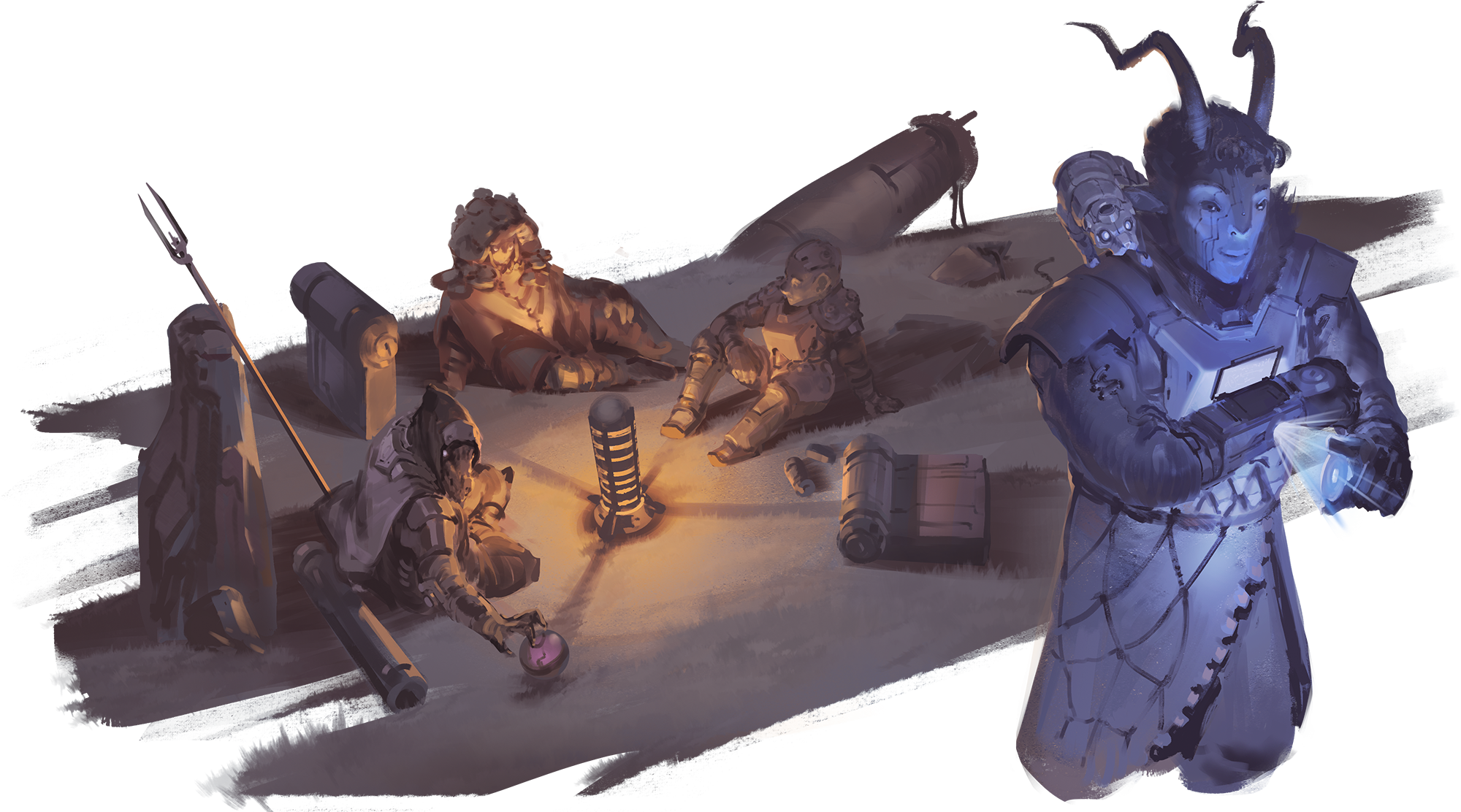
Принципы Мастера
При проведении этой кампании помните о следующих рекомендациях.
Наполните мир Руинами Технологий
Поскольку технологии падших были настолько продвинутыми, люди, живущие сегодня в Долине Эха, построили свою жизнь вокруг сохранившихся технологий. Тем не менее, они не понимают их достаточно хорошо, чтобы восстановить системы, которые придавали падшему миру его огромную мощь. Заполните мир руинами ультрасовременных зданий и машин, подвергните их вековому воздействию природы, а затем опишите менее развитый мир, построенный среди них. Вы также можете решить, что привело к падению прошлой цивилизации, а затем использовать это, чтобы придать колорит миру, который они оставили после себя.
- Как выглядит развалина торгового центра с небольшим поселением деревянных домов, построенных внутри?
- Какие конкретные технологии люди смогли сохранить? Как они их адаптировали? Кроме того, мы рекомендуем вам переосмыслить противников из Daggerheart как остатки.
- Как проявились бы способности противника, если бы он был сделан из схем и стали? Как изменился бы его внешний вид? У него были бы другие мотивы?

Сделайте детали Фантастическими, а конфликты Реалистичными
Хотя Долина Эха наполнена фантастическими технологиями, которые вызывают масштабные проблемы, каждое противостояние должно быть сосредоточено на борьбе ее жителей, будь то культурная, политическая или духовная. Используйте технологии как прикрытие для реалистичных конфликтов, чтобы смешать захватывающие детали кампании с личными интересами каждого персонажа. Вы можете использовать способности остатков и аспекты городов как аллегории эмоциональных переживаний группы. Например, если член группы недавно потерял кого-то из семьи, вы можете познакомить его с неигровым персонажем в Пустошах, который защищает остаток, с которым он вырос, несмотря на то, что его недавнее заражние привело к тому, что он стал жестоким.
- Как использование технологии подчеркивает конфликт между отдельными лицами или группами?
- Какие остатки могут служить физическим воплощением эмоциональных потрясений?
Традиции против прогресса
В городах и среди путешественников Долины Эха существует множество противоречивых идеологий, но большинство из них можно свести к двум школам мысли: одни хотят отказаться от технологий своих предшественников, чтобы дать современным людям возможность определить себя и найти свой путь в этом новом мире. Другие считают, что необходимо глубже копать в прошлом, чтобы использовать мощные машины, оставленные падшим миром.
- Как эти противоположные точки зрения вступают в конфликт?
- Как политические и социальные конфликты влияют на персонажей лично?
Особенности
Используйте эту информацию для подготовки своей кампании. При необходимости вы также можете поделиться ею со своими игроками.
Техномантия
Представьте, что вы пытаетесь объяснить нашим далеким предкам, что такое современные технологии — для них это будет похоже на магию. Именно так жители Долины Эха должны относиться к технологиям из падшего мира и описывать их. Нажимать кнопки на экранах, чтобы совершать сверхъестественные дела и читать древний язык кход невозможно без Сети. Люди, которые используют технологии, известны как техноманты, и то, как они используют технологии, ограничено только вашим воображением и воображением ваших игроков. Подумайте, как это умение будет выглядеть для каждого игрового персонажа и неигрового персонажа, позволяя технологиям стать чем-то необыкновенным.
Падший мир
Падшие были могущественным народом, который разработал те самые системы, которые, вероятно, и уничтожили их, но мир, который они оставили после себя, столь же богат, сколь и загадочен. Мерцающая Сеть над головой, стальные небоскребы, бетонные здания и машины со своим собственным сознанием заполняют Долину Эха, даже несмотря на то, что природа пытается вернуть ее себе. Здесь реки протекают через города, здания заполняются новой растительностью, а древние мониторы висят на стенах, как осколки разбитого стекла.
Операции с Металлоломом
Поскольку современный мир построен на руинах древней цивилизации, он зависит от металлолома, который она оставила после себя. Таким образом, вокруг концепции металлолома сформировалась уникальная экономика и набор терминов.
Операции с ломом часто начинаются сo сборщиков, тех, кто достаточно смел, чтобы отправляться в Пустоши, чтобы откопать древние технологии и охотиться за остатками в поисках запчастей. Те, кто выживает, могут заработать значительную комиссию в зависимости от того, что они приносят и где продают. Некоторые города хотят только запчасти для своих остатков, в то время как другие ищут артефакты, имеющие историческое значение.
Внутри городов сборщики лома обрабатывают и продают запчасти для механического ремонта и техномантии. Лавки по сбору металлолома — это (часто незаконные) предприятия, которыми управляют отдельные лица, но в некоторых городах требуется, чтобы все детали машин проходили через руки правительства, прежде чем поступать на частный рынок.
Те, кто работает с остатками или практикует техномантию, используют различные названия. Механики и хакеры-сборщики ремонтируют или восстанавливают машины, автономные или иные, а техноманты, работающие с данными, могут называться техниками.
Квант
Квант — это валюта, на которой основана экономика Долины Эха. Количество квантов, которыми владеет человек, обычно хранится на небольшом черном диске, который можно вставлять в устройства по всей долине. Люди часто украшают и персонализируют свои диски, чтобы отличать их друг от друга.
Сетевые узлы
Когда блуждающие города и путешественники хотят получить доступ к Сети в Пустошах, они бросают большие крюки, известные как узлы, на провода над головой, что позволяет им заряжать технологию и собирать данные из любого места. Некоторые техноманты могут даже перехватывать сообщения Сети с помощью узлов, хотя для этого требуются специальные знания и оборудование.
Иногда более амбициозные или отчаянные личности, известные как Скользящие, забираются на линии и используют более мелкие крюки или приспособления, чтобы скользить по кабелям Сети, что позволяет им собирать данные и пересекать Пустоши с высоты.
Блуждающие города
Блуждающие города являются настоящим свидетельством изобретательности жителей Долины Эхо. Большинство городов балансируют на вершине остатков или специально сконструированных транспортных средств, управляемых одним водителем или командой. Эти транспортные средства бывают самых разных форм и размеров и очень часто имеют в своем составе коллекции более мелких транспортных средств, которые путешествуют вместе с ними для охоты, защиты или общего расширения их населения.
Скиталец Каркрофт
Этот гигант является одним из крупнейших в своем роде, с многоярусными зданиями, расположенными на ходячей машине, и орудиями, торчащими под разными углами из его панциря, похожего на черепаху. Недавно лидеры Каркрофта перестали довольствоваться отправкой небольших Ходоков Крофта для нападения на менее защищенные города и путешественников, и решили попробовать что-то более амбициозное.
На протяжении десятилетий лидеры Каркрофта положили глаз на изобилие технологий и металлолома за стенами Аргента. Недавно они совершили ряд атак на этот грозный город. Стража Аргента пока что сдерживает их, но не без значительных потерь с обеих сторон.
Теперь, когда Аргент погрузился в кровавую бойню из-за Ярости Остатка, политики в огороженном стенами городе опасаются, что Ходоки Крофта вернутся, чтобы атаковать, пока они уязвимы. Ходят даже слухи, что Скиталец Каркрофт каким-то образом проник в Материнскую Плату и запустил вирус, что позволило им поочередно собирать металлолом из других поселений в долине. Поскольку они используют только механизмы, управляемые операторами, у них есть значительное преимущество, пока кто-нибудь не получит доступ к Материнской плате, чтобы понять причину.
В Пустошах также ходят слухи, что, хотя Каркрофт не использует остатки для работы, они собирают их ядра, чтобы использовать их уникальными способами, которые не были доступны другим техномантам раньше.

Другие блуждающие города
Вы можете заполнить Долину Эха нижеперечисленными странствующими городами или создать свои собственные.
Торговый караван Май: эта разношёрстная группа, состоящая из небольших транспортных средств, путешествует по Пустошам, охотясь за дикими остатками, чтобы добыть металлолом, и торгуя с кем угодно, у кого есть кванты или редкие технологии из погибшего мира. Торговцы Мая считаются особенно смелыми, так как они не используют стены или высокие шагающие машины для защиты от остатков. Их караван представляет собой множество механизмов, которые находятся низко над землей, и они жертвуют сильной защитой ради скорости и маневренности.
Библиотека: Построенная на вершине большого остатка, похожего на паука, Библиотека является ярким примером изолированности многих городов долины, как странствующих, так и окруженных стенами. Те, кто здесь живут, не столько заинтересованы в адаптации и разработке новых технологий, сколько в защите предметов и информации из падшего мира.
Нириидус: Длинное судно, похожее на сороконожку, с сотнями весел, которое извивается по воде у побережья Долины Эха. Те, кто здесь живут, ведут очень общественный образ жизни. Вместо одного лидера они каждый сезон выбирают новый «Голос народа».
Города-крепости
Большинство городов Долины Эха были построены на месте древних руин, а вокруг них возвели новые стены, чтобы защитить жителей от остатков и налетчиков. Некоторые города также используют географические особенности местности и древние сооружения для защиты, а другие быстро разрабатывают инновационные системы обороны.
Аргент
Аргент давно стал объектом внимания всей долины. Этот город с хорошо сохранившимися древними небоскребами, лучшими укреплениями и самой большой коллекцией прирученных остатков в Долине Эха также является оплотом богатства. Его строго организованная охрана защищает улицы и границы, а система тюремного труда обеспечивает круглосуточную работу правительственных предприятий по переработке металлолома.
После начала ярости Остатка лидер Аргента, известная как Прив, послала гонцов во все города-крепости в долине, чтобы попытаться объединить их и найти решение. Ходят слухи, что они организуются и попытаются проникнуть в башню Материнской платы, но это нарушит многие из самых святых заповедей Долины.
Другие города-крепости
Вы можете заполнить Долину Эха нижеперечисленными городами-крепостями или создать свои собственные.
Калькарус: этот город состоит из одного древнего небоскреба, который теперь заполнен небольшим лесом. Его жители пристроили к внешней стороне башни многочисленные деревянные здания, используя высоту Калькаруса для защиты от остатков.
Северный Оракул: Это небольшое поселение, место паломничества многих людей, имеет огромный амфитеатр, заполненный экранами. Верховная Оракул утверждает, что может использовать экраны, чтобы разговаривать с Материнской платой, но только ее самые преданные последователи утверждают, что видели это.
Свитч Витавик: Этот город полностью находится под землей, и глаза его жителей чувствительны к свету, потому что люди редко выходят на поверхность. Есть два распространенных слуха о Свитче: что его жители — каннибалы (маловероятно) и что они знают, как создавать новые осознанные остатки (возможно).
Разработка города
При разработке собственного блуждающего или города-крепости можно начать со следующих вопросов:
- Блуждает ли этот город? Если да, то на чем он построен? Если нет, то как выглядят его стены или укрепления?
- Как выглядит это место? Какие архитектурные элементы происходят из падшего мира? Какие части являются новыми?
- Каким уникальным образом люди использовали обломки и технологии падшего мира?
- Как жители относятся к остаткам? К Материнской плате?
- Какие культурные обычаи являются уникальными для этого города?
- Чего эти люди хотят, но не имеют? Что они могут предложить другим в обмен?

Вводный инцидент
Вы можете использовать приведенный ниже текст, чтобы начать свою кампанию, или создать свой собственный.
После вспышки «Ярости Остатка» городская стража Аргента бросилась на поимку жестоких машин. Но волна за волной они подвергались воздействию вредоносного вируса, и политики все больше отчаивались избежать распространения страха.
Прив Маелор Родек (догматичная эльф, она/ее), харизматичный лидер города, послала гонца, чтобы собрать команду, обладающую навыками и опытом для борьбы с остатками, которая будет работать под прикрытием в качестве гражданских лиц в секторе строительства механиков и выяснит, что вызывает атаки остатков.
Прив Родек дает слово, что любой лом, который группа добудет, защищая город, останется у них. Взамен она просит их собрать как можно больше ядер остатков, чтобы она могла передать их своим техномантам для диагностики причины насилия. Она также дает группе имя любопытного контакта, с которым им следует встретиться, прежде чем они отправятся на завод по переработке лома, где произошло большое количество нападений.
Этот контакт — Мак Хлам (странствующий фавн, он/его), который занимается незаконной скупкой металлолома, что делает его маловероятным другом для того, кто считает его деятельность вне закона. Но, поверив слову Прив, он дает группе «Горячую точку». Это незаконное устройство можно носить в рюкзаке, и, когда его ставят и активируют, оно на несколько мгновений останавливает остатки, позволяя группе выбраться из затруднительного положения.
Он также делает группе предложение: сохранить одно из ядер остатков, которые они извлекут, и принести ему, а не Родек. Он заплатит им несколько квантов, и у них будет возможность посмотреть данные из ядра, чтобы попытаться понять, что «вызывает весь этот переполох с остатками».
Пробиваясь через фабрику, испытывает ли группа сострадание к некогда ручным остаткам или же без разбора уничтожает их? Будут ли игроки пытаться поговорить с рабочими фабрики, чтобы узнать больше о «Ярости Остатков», или будут действовать как бригада по уборке, не сводя глаз с металлолома, который они могут получить? Принесут ли они Прив все ядра остатков, которые они соберут, или сохранят одно для Мака и рискнут навлечь на себя неприятности со стороны городской стражи? Если они хорошо себя проявят, расскажет ли Прив Родек группе больше о «Ярости Остатков» и причастности Материнской платы?
Для Мастера
Когда группа побеждает жестокие остатки на фабрике, дайте каждому персонажу по одному ядру остатка вместе с металлоломом, который они обычно получают в боях (см. раздел «Создание и торговля» ниже). В следующем описании предмета объясняется механика работы «горячей точки» и перечисляются требования к металлолому для создания новой.
Горячая точка: (потребляемый предмет) Активируйте, чтобы все остатки в пределах близкой дистанции стали обездвиженными.
Металлолом: 5 курков, 8 проволоки , 9 меди, 6 предохранителей, 3 реле, 1 аккумулятор
Механика кампании
Следующие механики являются уникальными для этой кампании.
Технический урон
В кампании Материнская плата магический урон называется техническим уроном. Этот урон наносится с помощью техномантии; это может быть пронзительный звук, ударная волна, ослепляющая вспышка, рой наноботов, дрон, излучающий мощный плазменный луч, или любой другой продукт сверхсовременных технологий.
Иконис и Прочие Инструменты
В следующих разделах подробно описано, как оружие, доспехи и другие технологии используются в кампании Материнская плата.
Иконис
В ходе этой кампании персонажи не имеют доступа к обычному набору основного и дополнительного оружия Daggerheart.
Вместо этого они получают персонализированное оружие, известное как Иконис — специальное оружие, которое выдается жителям Долины Эха по достижении ими совершеннолетия. Изначально это простой металлический жезл, который с возрастом носителя подвергается модификациям и приобретает форму, соответствующую его потребностям. Оно может эволюционировать и превращаться в различные виды оружия — посох с паутиной из цветной проволоки, обернутой вокруг рукояти, богато украшенный лук, гудящий энергией, тяжелый молот, предназначенный для кузницы, копье с ручками и спусковыми механизмами, позволяющими присоединять различные насадки, или что-либо еще, что может подойти владельцу.
Игроки будут проектировать Иконис своего персонажа, используя модуль листа персонажа «Материнская плата» (доступен в приложении или по адресу www.daggerheart.com/downloads). Каждый игрок должен взять копию модуля и поместить ее под правой стороной своей листа персонажа. Затем они выберут характеристики, дальность и урон в верхней части модуля, а затем придумают название и описание для своего оружия. Наконец, они запишут детали оружия в раздел «Основное оружие» на листе своего персонажа.
Иконис всегда считаются двуручным оружием и начинают с особенностью «Связанный»:
Связанный: Получите бонус к броскам атаки, равный вашему уровню.
Аугментации
Иконис также позволяет персонажам устанавливать улучшения. Иконис персонажа начинается с двумя ячейками для аугментаций на Ранге 1, что показывает, что он эволюционировал из своей самой базовой формы, и получает дополнительный ячейку на каждом последующем Ранге. Аугментации могут быть созданы в качестве действия во время отдыха, когда у персонажей есть для этого необходимые материалы. (См. раздел «Создание и торговля» для получения дополнительной информации).
Иконис на начальном этапе не имеет установленных аугментаций. Персонаж может создать столько аугментаций, сколько захочет, но он может установить только то количество, которое соответствует количеству доступных ячеек для аугментаций. Например, даже если персонаж 1-го уровня создал три аугментации, он может установить на свой иконис только две из них одновременно. Когда он переходит на 2-й уровень (и становится персонажем 2-го ранга) он может установить все три аугментации. После установки аугментации рассматриваются как дополнительные функции для этого оружия. Персонажи могут свободно менять аугментации, которые они уже создали, во время отдыха.
Модуль листа персонажа «Материнская плата» включает в себя набор базовых аугментаций, из которых персонажи могут выбирать, но мы рекомендуем мастеру создавать дополнительные аугментации для своих игроков, используя предоставленные варианты в качестве шаблона.
Доспехи
Персонажи имеют доступ к обычному набору доспехов Daggerheart, но должны адаптировать его по своему вкусу в рамках кампании.
Сетевой Узел
Каждый персонаж при создании добавляет в свой инвентарь сетевой узел. Узлы обычно представляют собой большие крюки, прикрепленные к кабелю для передачи данных. Они позволяют путешественникам закидывать крюк на надземный провод, чтобы заряжать свои устройства и получать доступ к сети во время перемещения по Пустошам. Персонажи должны иметь доступ к сети через трос или другие средства, чтобы выполнять действия во время отдыха.

Создание и Торговля
В этой кампании золото не используется в качестве валюты. Вместо этого персонажи могут собирать металлолом, чтобы обменять его на валюту, известную как квант. Модуль листа персонажа «Материнская плата» помогает отслеживать количество металлолома, а также количество квантов, которые можно потратить. Все персонажи начинают с 5 квантами.
Квантовая Экономика
Используйте следующий коэффициент конвертации для Daggerheart при ценообразовании товаров и услуг с использованием квантов.
10 квантов = 1 горсть золота
100 квантов = 1 мешок золота
1000 квантов = 1 сундук золота

Сбор металлолома
Когда персонажи побеждают противников остатков, они могут собрать металлолом после боя. Существует три категории металлолома, каждая из которых имеет свой размер кубика: осколки (
Каждый игрок индивидуально бросает кубики, которые вы определили, и результат каждого кубика сопоставляется с таблицей соответствующих категорий металлолома, приведенной здесь и в модуле листа персонажа Материнская плата, чтобы определить, какой металлолом получает персонаж. Если результат броска попадает между двумя значениями, выберите вариант с меньшим номером. Персонаж получает один кусок металлолома за каждый кубик, что записывается в строке рядом с этим видом металлолома в модуле листа персонажа.
Совет: Думайте о числах в таблице металлолома как о порогах урона; когда вы достигаете этого порога, вы получаете этот металлолом.
Пример: После стандартного боя с несколькими остатками мастер просит игроков бросить по два кубика для осколков, два кубика для металлов и один кубик для компонентов. Первый игрок бросает 2 и 4 для осколков, получая катушку и курок. Он бросает 5 и 7 для металлов и получает кобальт и платину. Наконец, он бросает 9 для компонентов и получает конденсатор. Второй игрок бросает 1 и 6 для осколков, 3 и 6 для металлов и 5 для компонентов. Он получает шестерню, кристалл, медь, серебро и плату.
Таблицы категорий металлолома
Осколки (
| 1 | 2 | 3 | 4 | 5 | 6 |
|---|---|---|---|---|---|
| Шестерня | Катушка | Проволока | Курок | Линза | Кристалл |
Металлы (
| 1 | 3 | 5 | 6 | 7 | 8 |
|---|---|---|---|---|---|
| Алюминий | Медь | Кобальт | Серебро | Платина | Золото |
Компоненты (
| 1 | 3 | 6 | 8 | 9 | 10 |
|---|---|---|---|---|---|
| Предохранитель | Плата | Диск | Реле | Конденсатор | Аккумулятор |
Таблица награды металлоломом
Используйте следующую таблицу в качестве общего руководства по наградам в виде лома после сражений:
| Награда металлоломом | Лёгкий Бой | Стандартный Бой | Сложный Бой | Очень Сложный Бой |
|---|---|---|---|---|
| Несколько остатков | 2 Осколка | 2 Осколка, 1 Металл | 2 Осколка, 1 Металл, 1 Компонент | 2 Осколка, 2 Металла, 1 Компонент |
| Большинство остатки | 2 Осколка, 1 Металл | 2 Осколка, 2 Металла, 1 Компонент | 3 Осколка, 2 Металла, 1 Компонент | 3 Осколка, 3 Металла, 2 Компонента |
| Все остатки | 2 Осколка, 1 Металл, 1 Компонент | 3 Осколка, 2 Металла, 2 Компонента | 3 Осколка, 3 Металла, 2 Компонента | 4 Осколка, 3 Металла, 3 Компонента |
Реликвии
Существует дополнительная категория лома, называемая Реликвиями. Это уникальные куски лома, которые можно найти только на определенных остатках. Когда персонажи побеждают особенно важного или сильного противника-остатка, вы можете дать им по реликвии вместе с металлоломом из таблицы выше. Эти реликвии должны быть индивидуальными для каждого противника, например, стальной рог оленя, линза мерцающего сокола, челюстной поршень криодракона или золотые чешуйки окуня. Реликвии стоят 20 квантов и часто используются для создания мощных аугментаций.
Вы также должны предоставить персонажам возможность получить определенные награды в виде осколков, металла или компонентов, будь то через контракты с неигровыми персонажами, охоту на определенных противников, исследование определенных областей или через лавки с ломом.
Совет: Значения в таблице наград выше рассчитаны на кампанию из примерно 50 сессий с 1-2 сражениями в каждой сессии. Если вы планируете провести более короткую или более длинную кампанию, скорректируйте награды соответственно.
Создание из металлолома
Персонажи могут использовать собранные обломки для создания аугментаций для своих Иконисов и других предметов. Когда у них достаточно лома для создания аугментации, они могут использовать ход во время отдыха и потратить соответствующее количество обломков. Когда для аугментации требуется обычная реликвия, персонаж может потратить любую реликвию, которая у него есть.
Некоторые аугментации имеют предварительные условия, называемые прекомпиляциями. Когда это предварительное условие выполнено, усилитель становится доступным для изготовления. Базовые аугментации имеют прекомпиляции, которые требуют, чтобы персонаж был определенного уровня, но прекомпиляция может быть чем угодно: определенное значение силы или уклонения персонажа, определенный домен или класс, или что-либо еще по вашему усмотрению. Аугментации всегда можно разобрать на части и использовать их как обломки, если это необходимо.
Также приветствуется давать персонажам дополнительные задания или испытания, в которых используется лом, например, построить определенную машину для выполнения задания или собрать лом для союзника, который пытается отремонтировать остаток.
Продажа лома за Кванты
Местные лавки по скупке металлолома в каждом городе обычно обменивают металлолом на кванты, а кванты на металлолом. По умолчанию, каждая единица металлолома стоит столько, сколько указано в предыдущей таблице категорий металлолома (независимо от того, покупают игроки или продают), и каждый магазин имеет дневной запас, равный
Пример: Персонаж хочет продать компоненты в местной лавке по скупке металлолома: 2 платы и 1 аккумулятор. Поскольку каждая плата стоит 3 кванта, а аккумулятор - 10, он получит 6 квантов за плату и 10 квантов за аккумулятор, что в сумме дает 16 квантов. Он также хочет продать несколько осколков: 2 линзы и 6 катушек. Каждая линза стоит 5 квантов, а каждая катушка - 2, что приносит ему дополнительные 22 кванта. Теперь у него 38 квантов.
Персонажу нужно купить 1 кристалл и 4 серебра, чтобы изготовить аугментацию. Мастер говорит, что в лавке есть достаточное количество, поэтому они платят 6 за кристалл и 12 за серебро, что в сумме составляет 18 квантов. Они покидают лавку с 20 квантами, 1 кристаллом и 4 серебром.

Написание Кхода
Язык разработан Chris Willett
Кход, язык технологии падшего мира, долгое время оставался загадкой для жителей Долины Эха. Если вы хотите дать своим игрокам возможность научиться расшифровывать и писать на этом языке в ходе кампании, мы советуем вам использовать его. Мы рекомендуем с самого начала доставлять им сообщения с материнской платы, которые они не могут прочитать, а затем, по мере развития сюжета, техноманы раскрывают им части этого языка, и, наконец, в кульминационный момент дают им инструменты для чтения и письма на этом языке.

ПОДПРОГРАММА 1. ПОСТРОЕНИЕ ГЛИФОВ УЗЛОВЫХ СЛОВ
Пример - Материнская (Плата)
Отдельная языковая единица (слово) не имеет отдельных букв. Кход основан на девяти узлах, каждый из которых представляет несколько букв.
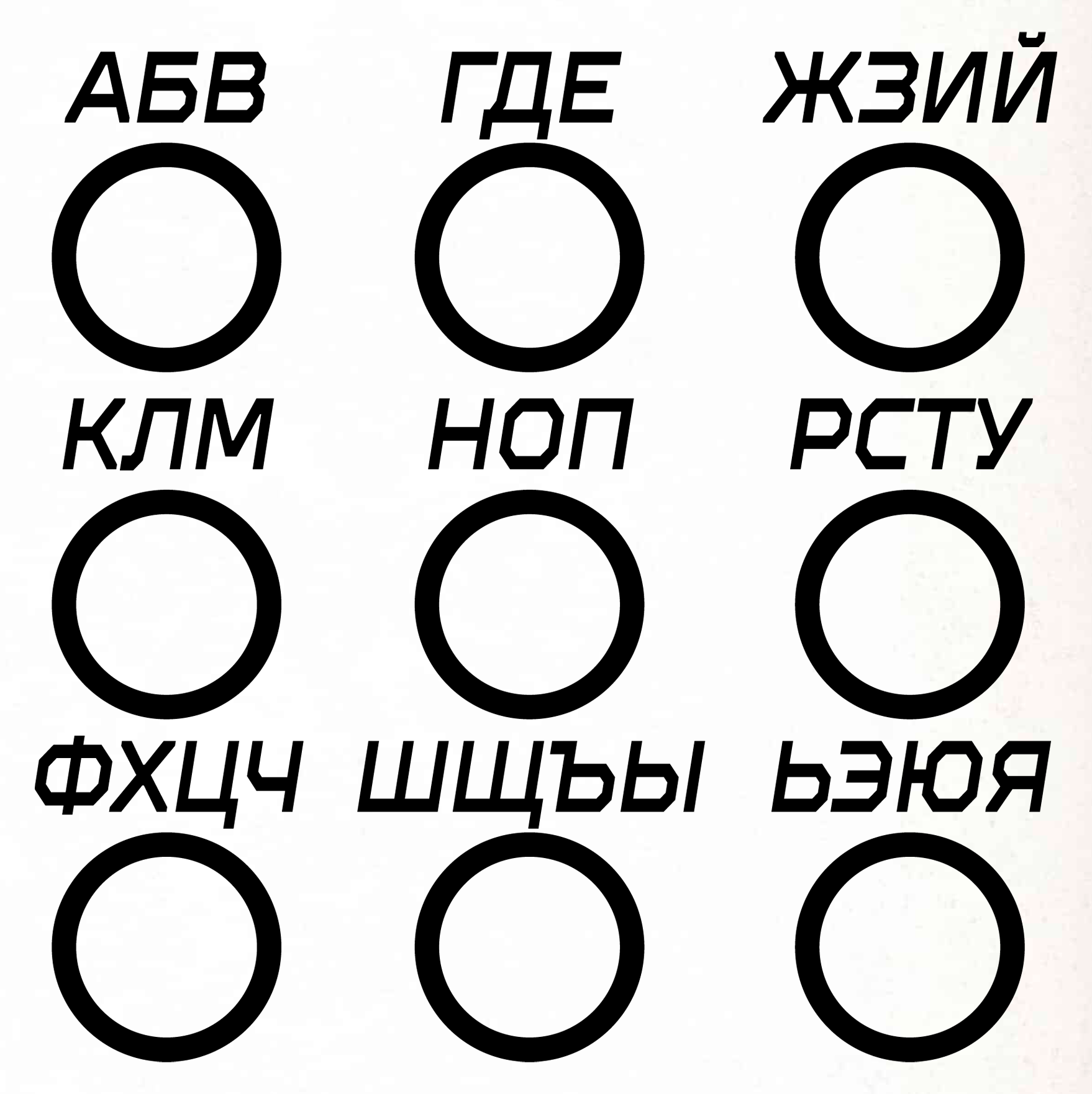
Каждое слово — это цепь, которая проходит от Заряда
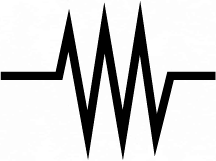
к Земле.
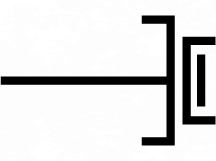
Шаг построения 1
Чтобы начать создание слова “Материнская”, нарисуйте один узел (круг) и соедините его с индикатором заряда (линией). Это называется узлом заряда и указывает, где начинается слово. Обратите внимание на положение узла заряда для слова, которое вы пишете, по отношению к другим узлам.
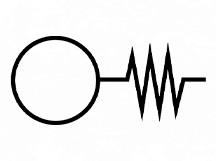
Шаг построения 2
Найдите второй узел для следующей буквы в слове. В данном случае А находится сверху. Добавьте линию трассировки, чтобы соединить цепь между узлом заряда и новым узлом. Каждая линия трассировки проходит от исходного узла до конечного узла.
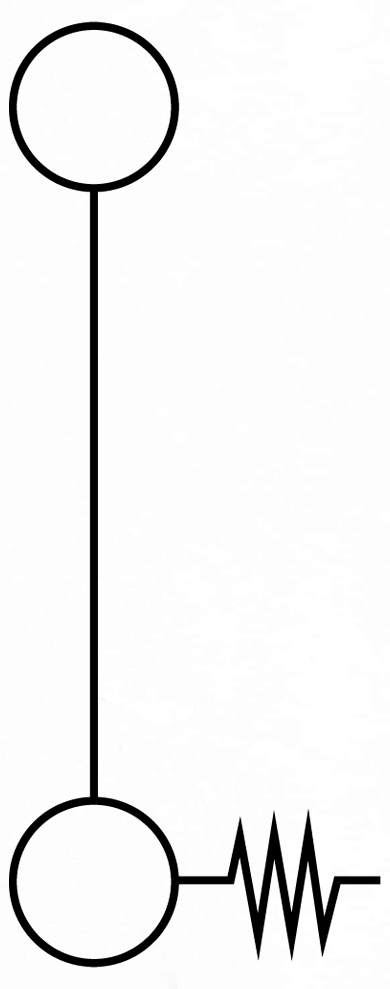
Шаг построения 3
В исходном узле первую позицию занимает буква К, вторую — Л, а третью — М. Для М добавьте три подузла (точки) к линии трассировки.
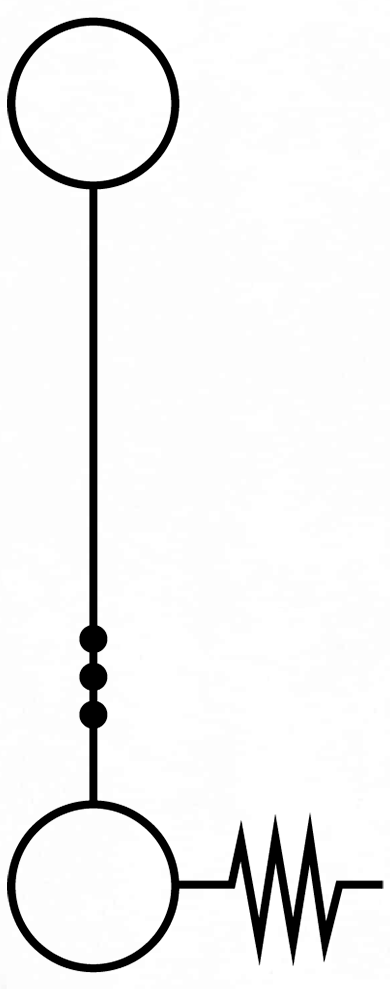
А находится на первой позиции в своем узле, поэтому, когда мы соединяем линию трассировки с узлом, содержащим Т, мы добавляем 1 подузел.
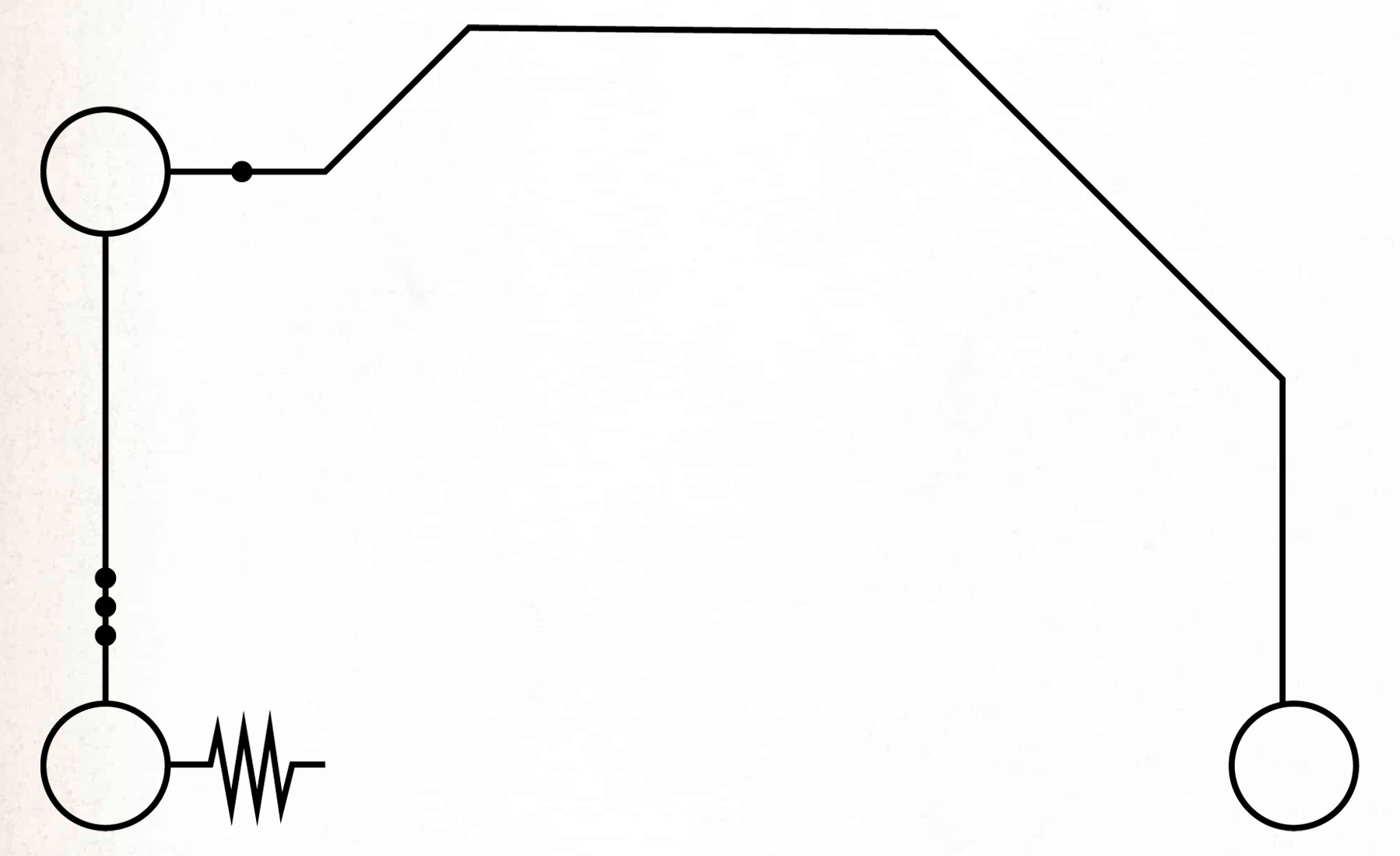
Продолжая, мы можем дойти до МАТЕР. В этом случае, если мы соединим трассировку с узлом РСТУ, порядок букв станет неясным. Чтобы этого не произошло, нарисуйте круг снаружи или внутри узла РСТУ и соедините линию трассировки с этим кругом.
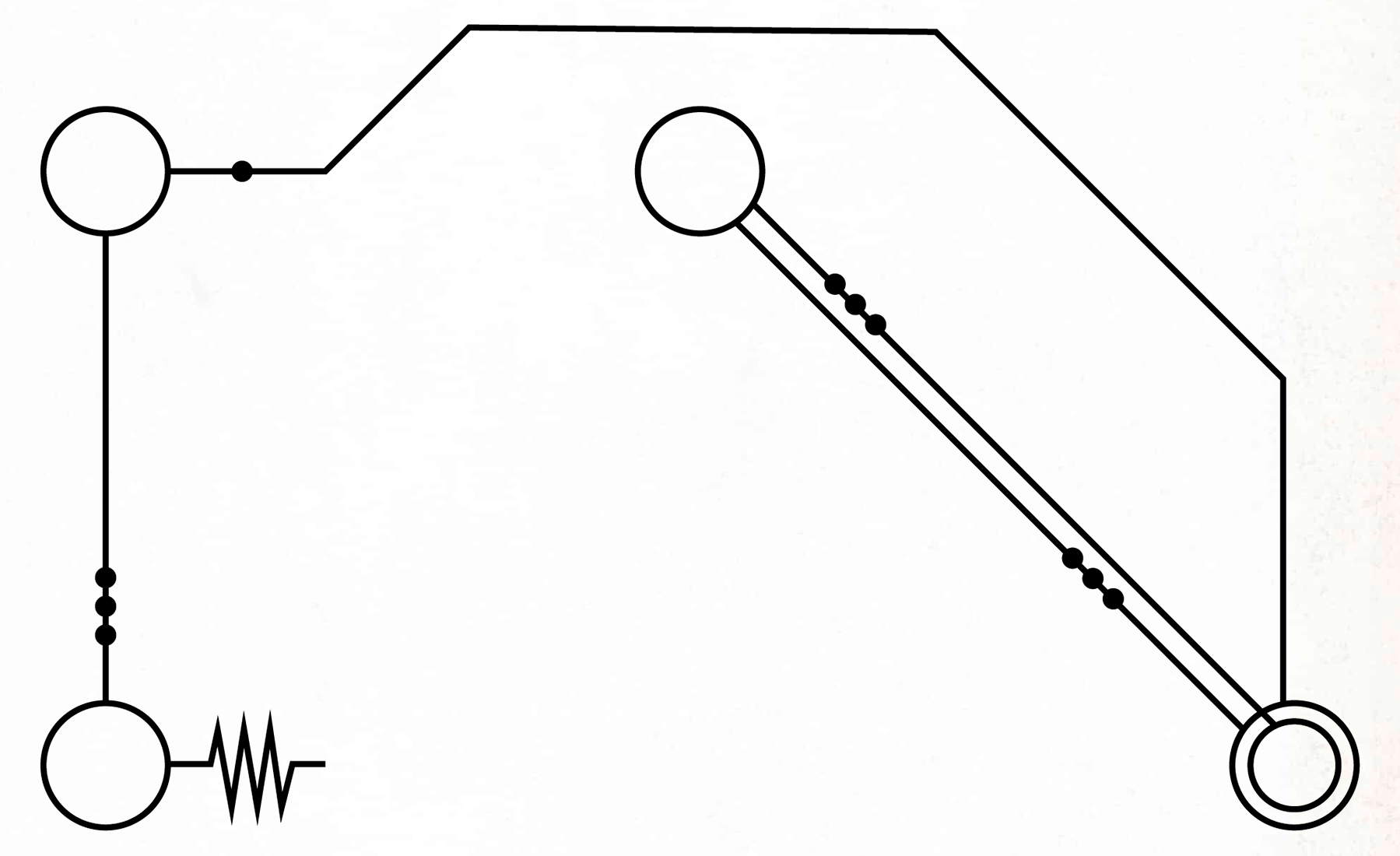
Продолжайте, добавляя линии трассировки, подузлы и круги узлов по мере необходимости, пока не дойдете до последней буквы слова.
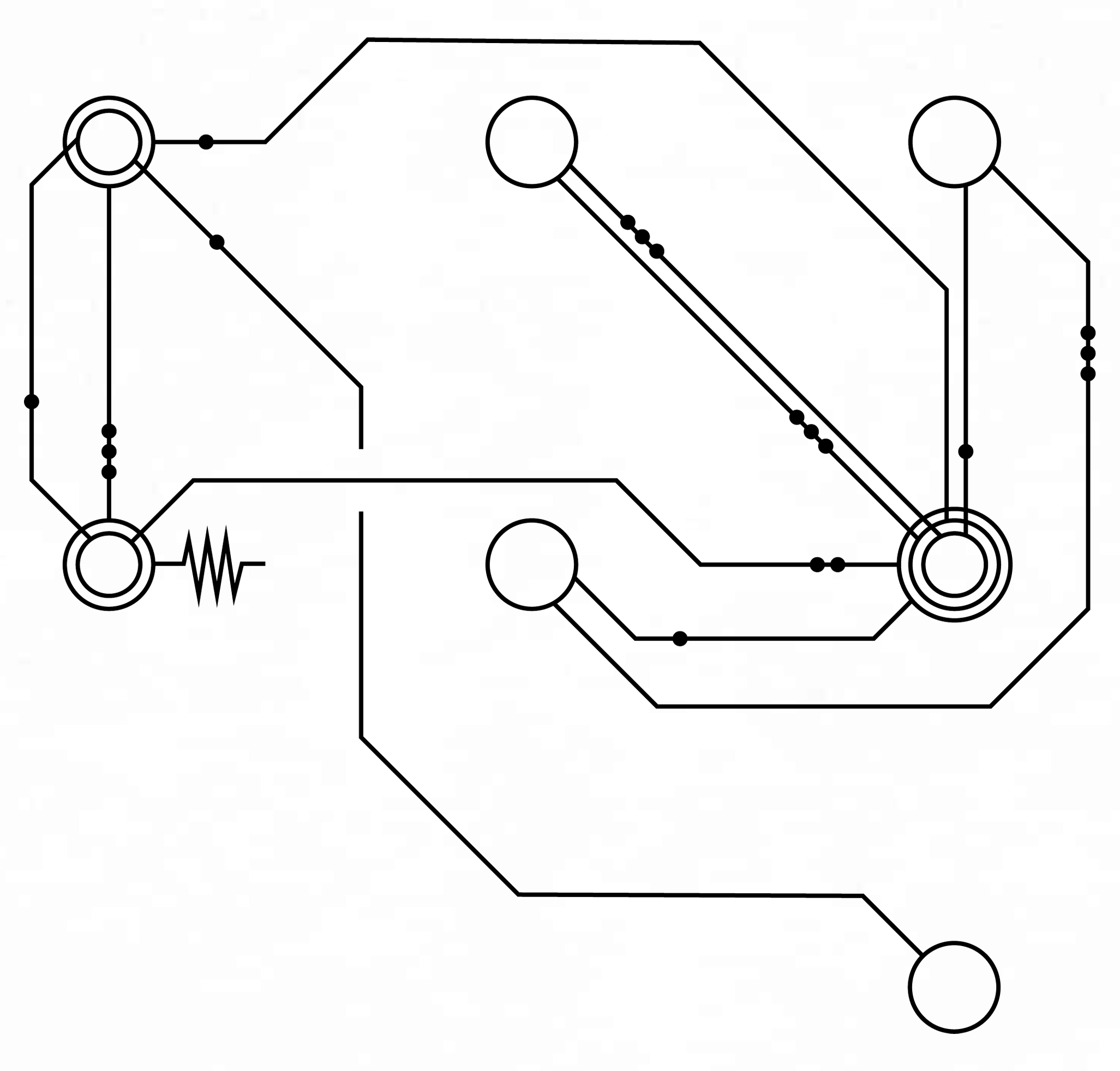
Шаг построения 4
Наконец, добавьте индикатор заземления, чтобы разместить последние подузлы и завершить цепь.
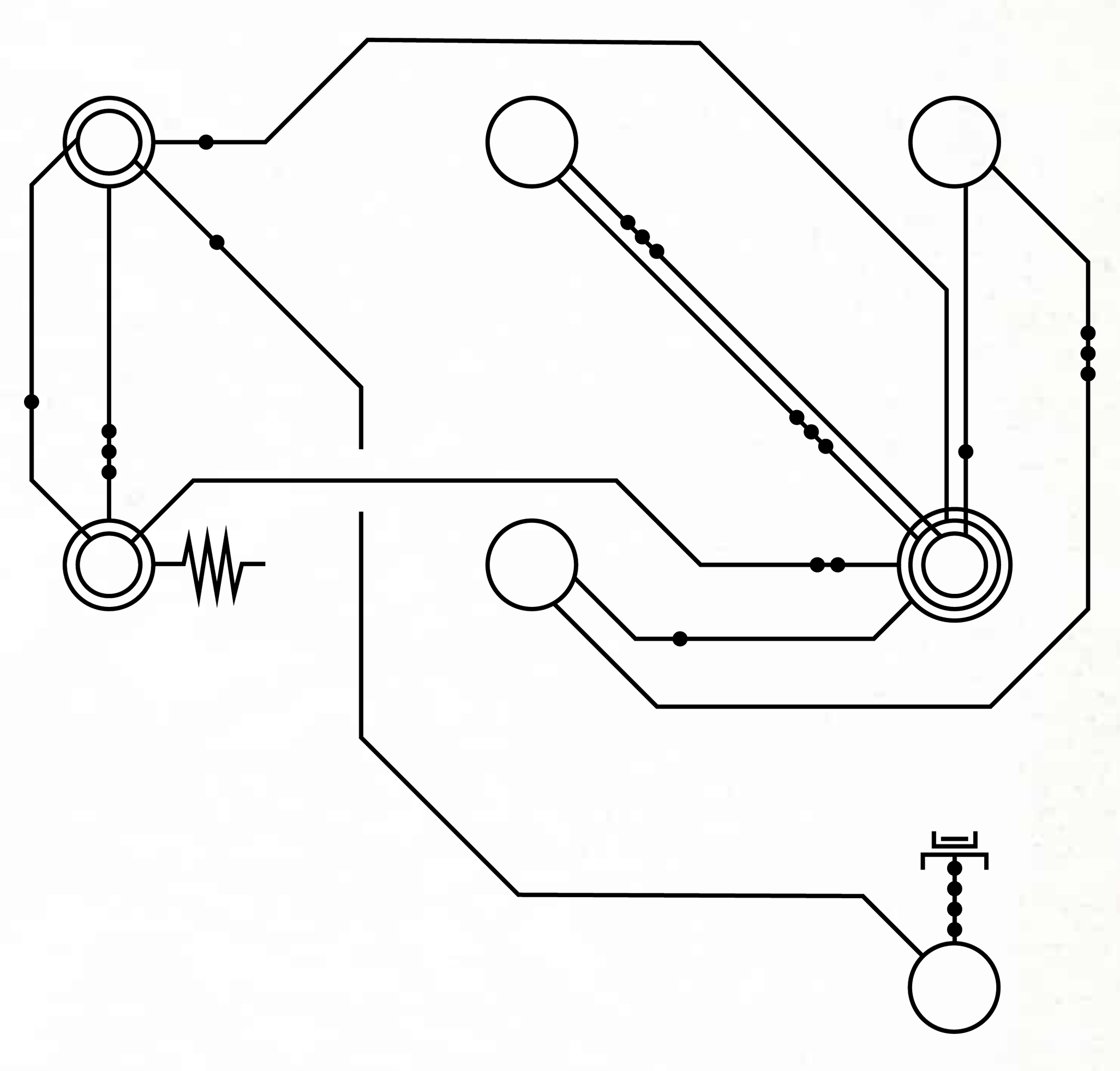
Шаг построения 5
Составные слова иногда содержат слишком мало узлов, поэтому их ориентация на сетке из девяти узлов является неопределенной. Например, такие слова, как Лом, Труп и Друг, требуют всего двух узлов. В таких случаях мы добавляем нулевой модификатор в удаленный угол глифа, чтобы указать относительное положение узлов, входящих в слово.
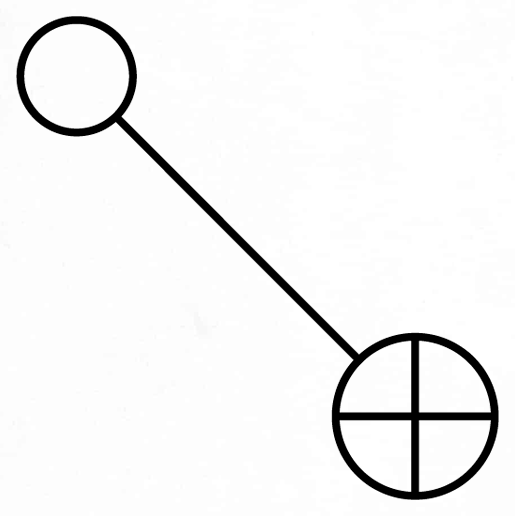
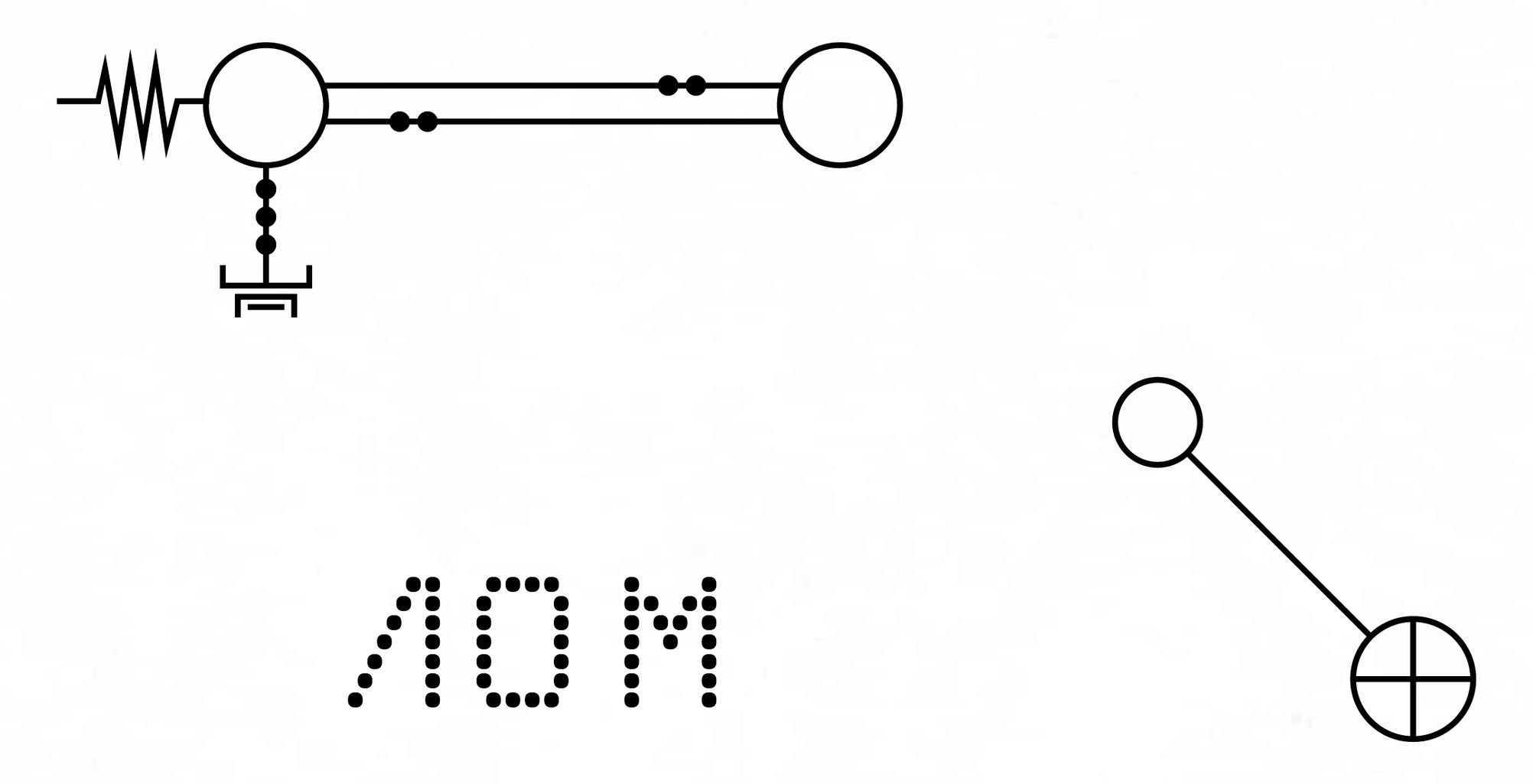
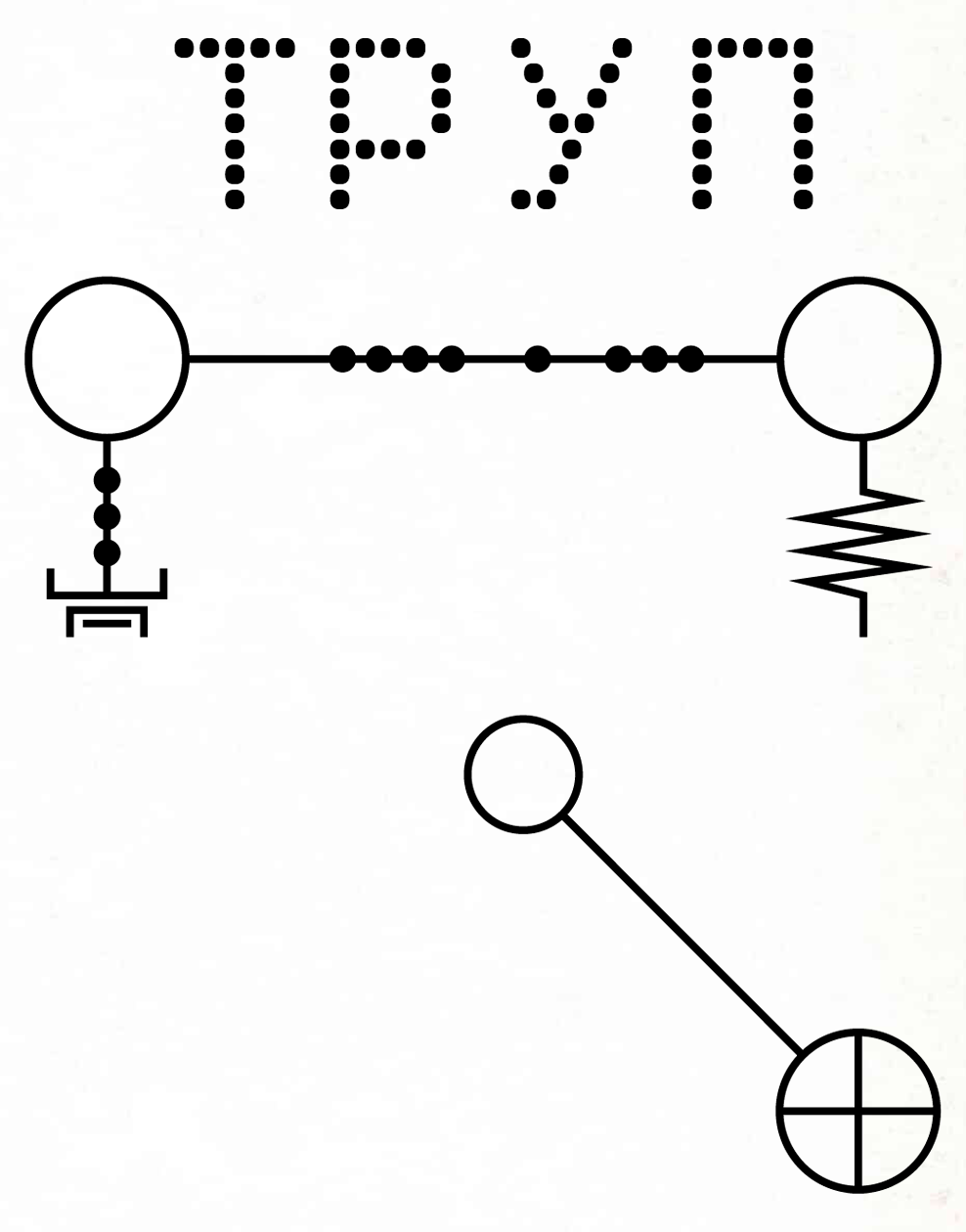
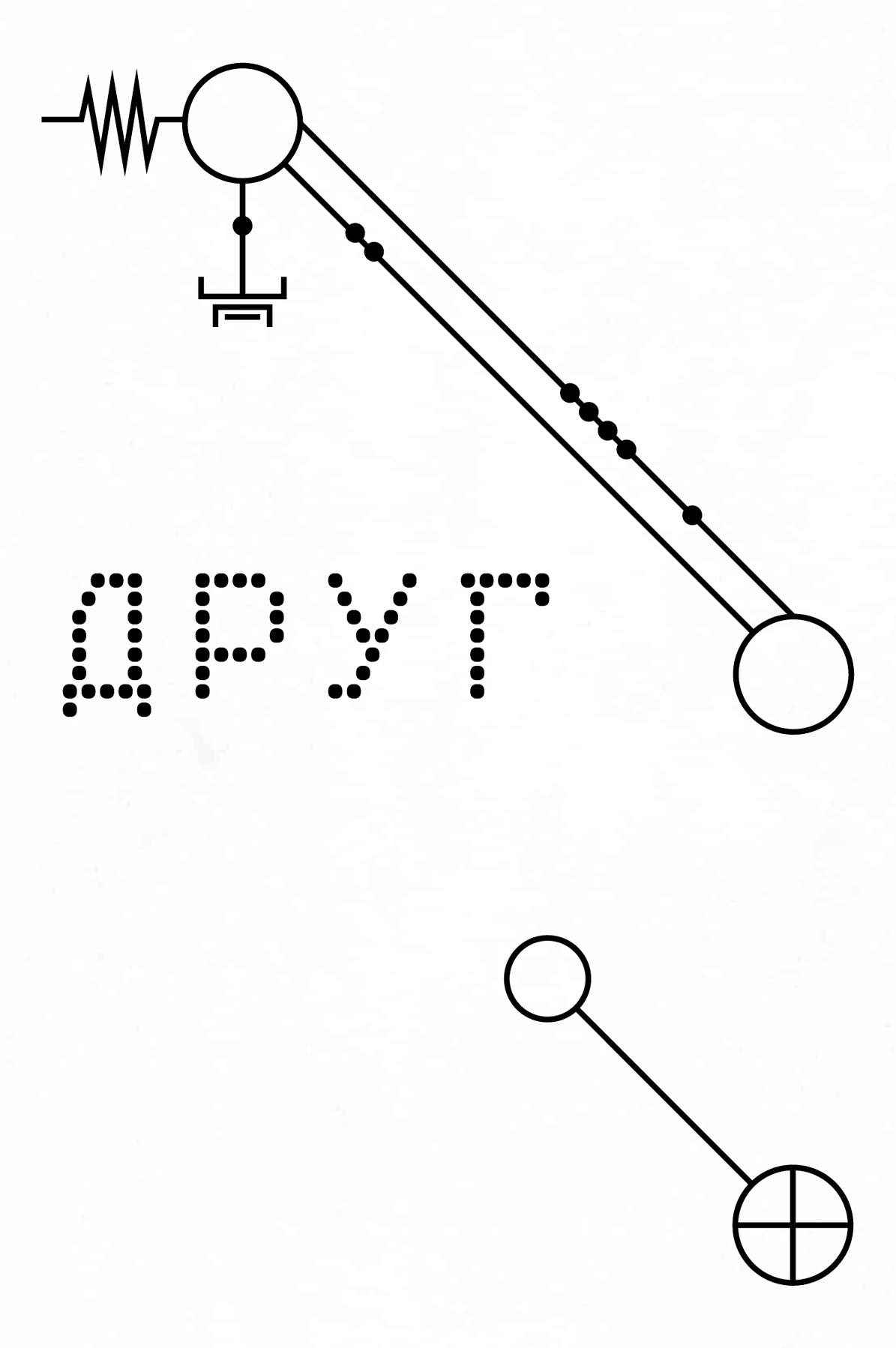
ПОДПРОГРАММА 2. ПОСТРОЕНИЕ ПРЕДЛОЖЕНИЙ
Нашим примером для этой подпрограммы будет следующее предложение: Сеть передаёт сообщения из города в город.
Некоторые из этих слов в кходе имеют упрощенные формы, не построенные на основе узлов, такие как «или» и «из-в». Смотрите следующий словарь для ознакомления с этими словами:
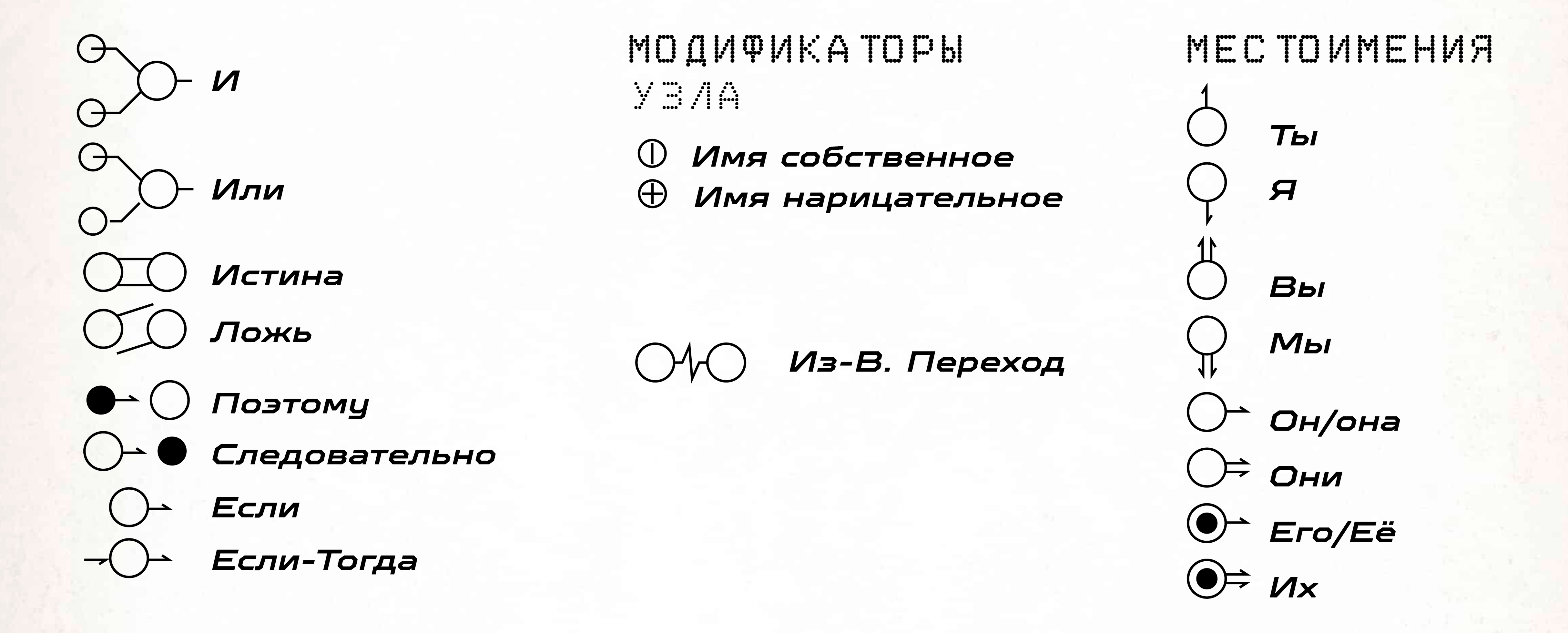
Шаг построения 1
Во-первых, мы обозначаем начало предложения с помощью соединителя, сложной серии точек пайки, где кходеры могут соединять одну цепь предложения с другой. Пример соединителя можно увидеть здесь; различная длина его полос не имеет никакого значения.
Шаг построения 2
Затем выложите все слова, построенные по узловому принципу, в линию по порядку. Игнорируйте слова, у которых в словаре есть сокращенная версия.

Шаг построения 3
Примените модификаторы узлов. В данном случае необходимо изменить только Сеть с помощью модификатора, который вставляется в узел заряда.
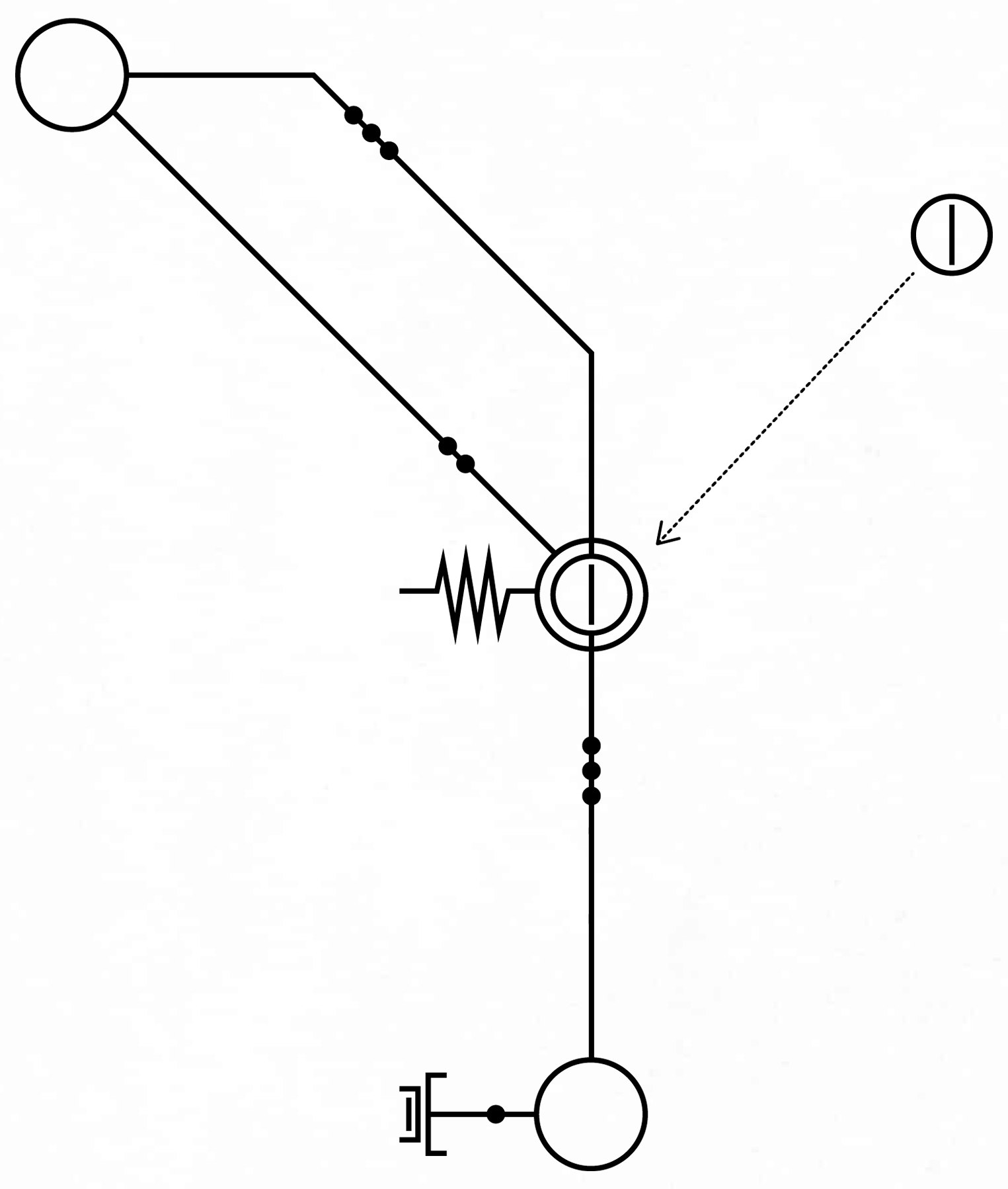
Шаг построения 4
Добавьте слова из лексикона. Обратите внимание, что Из-В заменяет два слова, а не одно. Как и Если-Тогда, оно располагается между двумя глифами, изменяя фразу «из города в город» на «город из-в город». Небольшие слова из словаря можно размещать в любом подходящем месте.
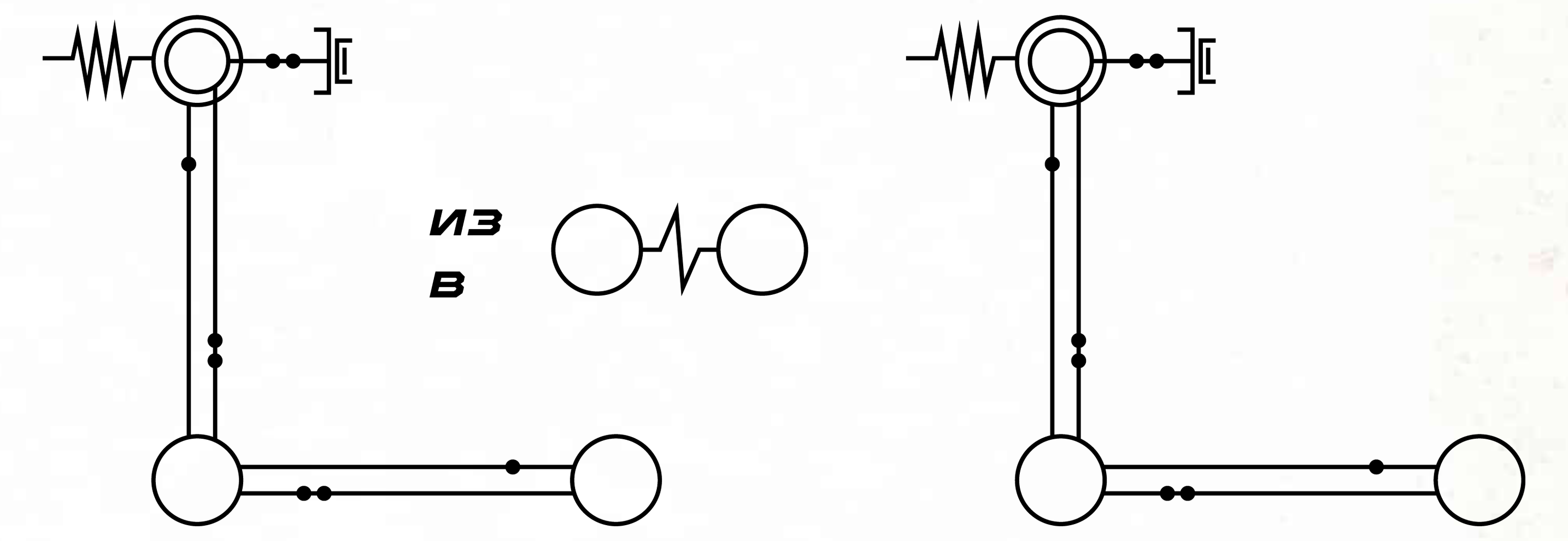
Шаг построения 5
Добавьте точки, восклицательные и вопросительные знаки к конечному слову предложения. Запятые разделяют линии трассировки (нарисованные на следующем шаге) двумя вертикальными линиями.
Примеры:
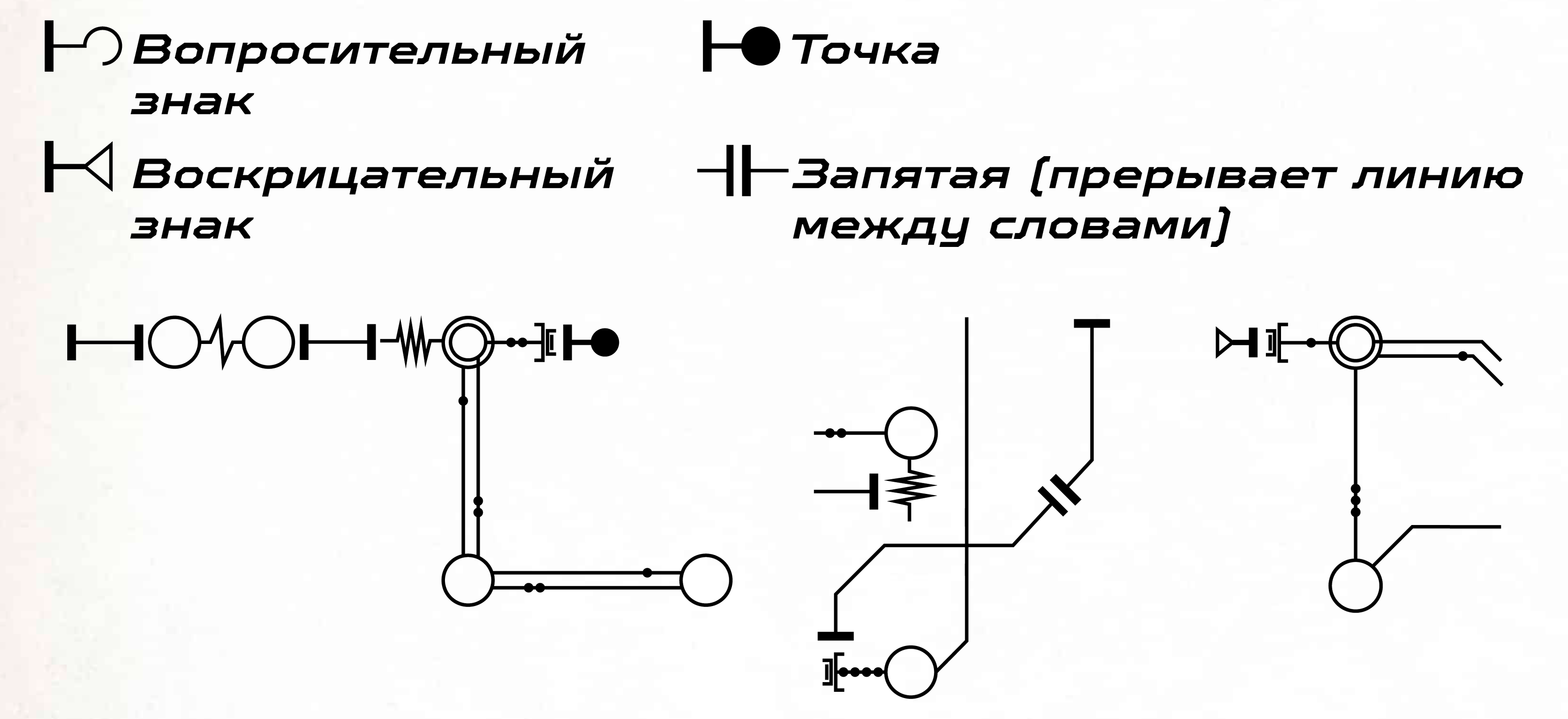
Шаг построения 6
Соедините цепь между составными словами, соединив заземление одного слова с зарядом следующего. Включите слова из словаря в эту цепь. Эти соединения цепи всегда начинаются и заканчиваются простой чертой. Добавьте трассировку от соединителя к первому узлу заряда.
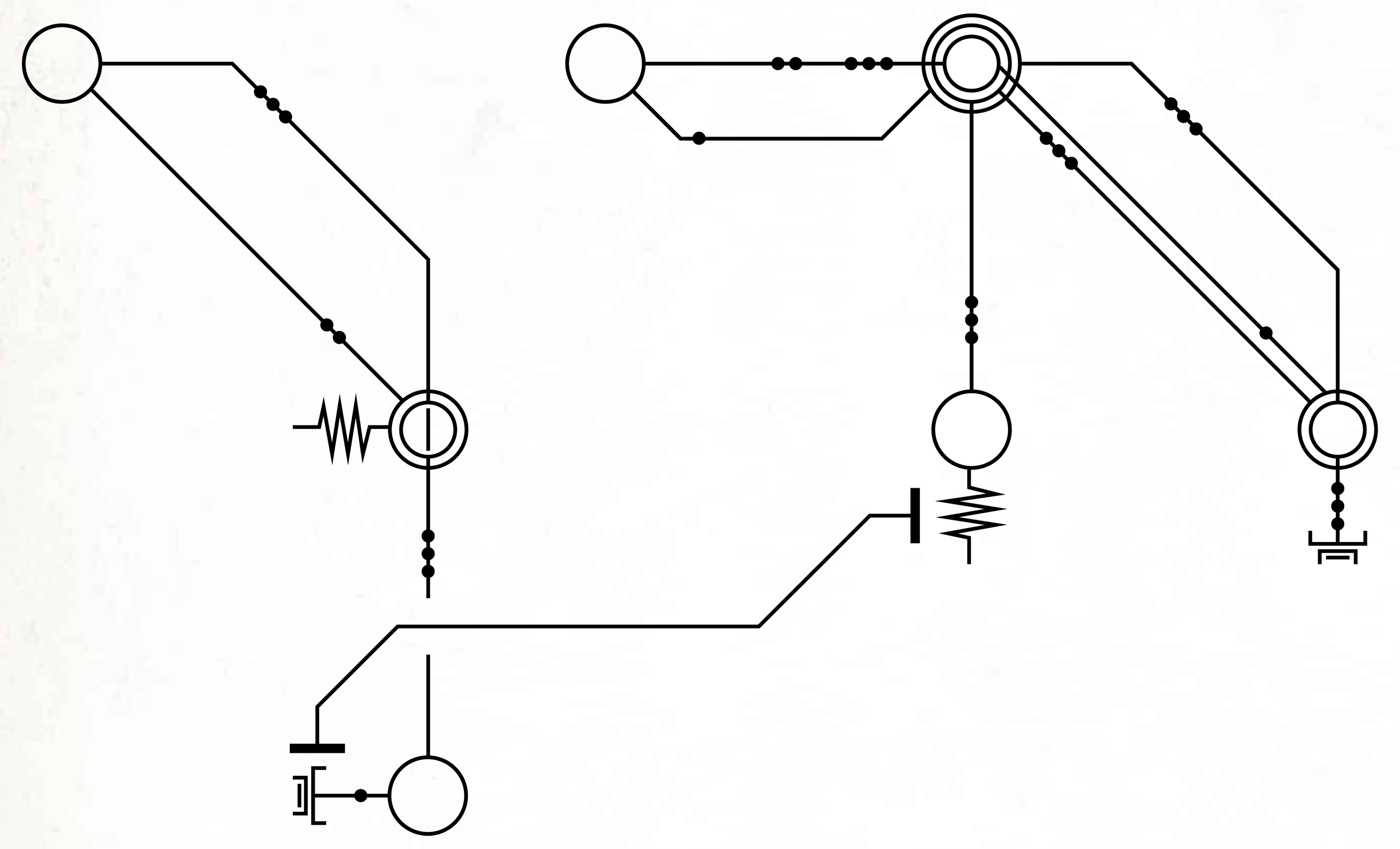
Итоговое предложение

Вопросы для нулевой сессии
Задайте игрокам любой из этих вопросов или придумайте свои собственные.
- Каковы отношения вашего персонажа с остатками? Как он полагается на них?
- Как ваш персонаж использовал технологии или техномантию в повседневной жизни до «Ярости Остатков»? Что изменилось после этой катастрофы?
- Опишите сооружение, построенное падшей цивилизацией, которое ваш персонаж видел раньше. Как вы думаете, для чего оно использовалось изначально? Для чего оно используется сейчас?
- Как остатки физически изменяются, когда начинают прибегать к насилию?
- Опишите блуждающий город, который ваш персонаж однажды посетил. Что в нем было уникального?
.png)
Авторизируйтесь, чтобы оставить комментарий
Комментарии
Интересный сеттинг, жаль пока не перевели
gm: what are u going to do now that u dont have magic and wild life
me: im a hacker who messes with the neural networks piloting mechanical beings and replacing the neural networks with systems i coded myself
gm: (screams internally)
А лист персонажа по Материнской плате планируешь перевести?
А лист персонажа по Материнской плате планируешь перевести?